 Weird Stuff
Weird Stuff  Weird Stuff
Weird Stuff  Movies and TV
Movies and TV Television’s Top Ten Most Ruthless Serial Killers
 Weird Stuff
Weird Stuff Ten of the Strangest Paraphilias Ever Documented
 Miscellaneous
Miscellaneous 10 Interesting Physics Facts about Bullets
 History
History 10 Oddest Naval Actions in History
 Music
Music 10 “Bands” That Are Actually Just One Person
 History
History Ten Uprisings Led by Women
 Creepy
Creepy Top Ten Creepiest Dolls in History
 Animals
Animals 10 Animal Actions You’ve Never Seen (Caught on Camera)
 Health
Health 10 Medical Treatments Your Doctor Probably Won’t Approve
 Weird Stuff
Weird Stuff 10 Reasons the Psychic Internet Theory Will Blow Your Mind
 Movies and TV
Movies and TV Television’s Top Ten Most Ruthless Serial Killers
 Weird Stuff
Weird Stuff Ten of the Strangest Paraphilias Ever Documented
Who's Behind Listverse?

Jamie Frater
Head Editor
Jamie founded Listverse due to an insatiable desire to share fascinating, obscure, and bizarre facts. He has been a guest speaker on numerous national radio and television stations and is a five time published author.
More About Us Miscellaneous
Miscellaneous 10 Interesting Physics Facts about Bullets
 History
History 10 Oddest Naval Actions in History
 Music
Music 10 “Bands” That Are Actually Just One Person
 History
History Ten Uprisings Led by Women
 Creepy
Creepy Top Ten Creepiest Dolls in History
 Animals
Animals 10 Animal Actions You’ve Never Seen (Caught on Camera)
 Health
Health 10 Medical Treatments Your Doctor Probably Won’t Approve
Ten Astonishing New Discoveries About The Cosmos
The universe is a fascinating place – a vast cosmic void home to all kinds of strange and spellbinding things. Black holes. Neutron stars. White dwarfs. The skies are filled with these spectacular oddities.
Day in, day out, astronomers look up at the heavens hoping to catch a glimpse of some new celestial phenomenon. And, now and then, they strike it lucky, spotting an ethereal rarity peeking through the darkness of outer space. This list explores ten cosmic discoveries that are, quite literally, out of this world.
Top 10 Weird Things That Could Exist In Space
10 Restless Black Hole Traipses Across the Cosmos
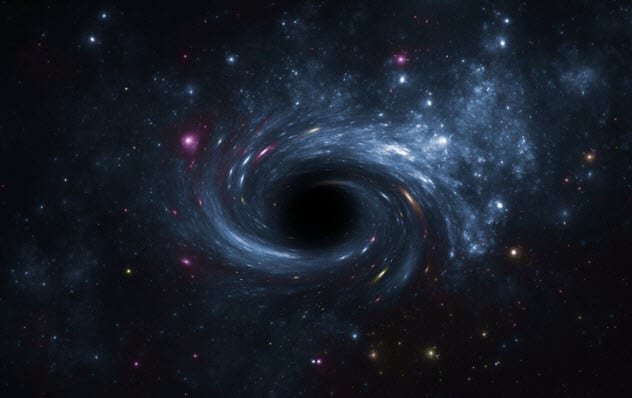
For years, astronomers believed that supermassive black holes never moved. The cosmic colossuses are said to sit stoically at the heart of almost all large galaxies while stars and planets soar around them. But a recent discovery suggests that the model might not be as accurate as scientists once thought.
Researchers at the Harvard & Smithsonian Center for Astrophysics were taken aback when they spotted a supermassive black hole sauntering through the skies. The scientists had been comparing the motion of galaxies with that of the black holes inside them. Of the ten galaxies they studied, nine contained black holes that were at rest. But when they peered inside J0437+2456, a spiral galaxy 228 million light-years from Earth, the researchers discovered a “restless” black hole moving at some 4,810 kilometers per second (2,990 miles per second).
Supermassive black holes weigh so much that it takes an enormous amount of force to get them to move. The one in J0437+2456 has a mass almost three million times greater than that of the sun. Scientists are now keen to work out what caused the deep-space giant to start moving in the first place.
Astrophysicists have two main theories. It could be that the black hole was born when two separate black holes collided and merged. This fusion sometimes causes recoil, which could have sent the newly-formed black hole spinning across the cosmos. Or it could be that the black hole is half of a binary system orbiting some center of mass with its hidden cousin.[1]
9 Gamma Rays Rip Through the Milky Way

In 2021, scientists noticed an intense burst of energy shooting across the galaxy. A bout of gamma rays flashed through the Milky Way, although its origin has left astronomers stumped. Gamma rays are created when streaks of cosmic rays come tearing through the galaxy. Cosmic rays are made up of protons and other particles spat out by exploding stars and black holes. When these particles come into contact with galactic dust in the Milky Way, it triggers nuclear reactions resulting in ultra-high-energy gamma rays like the ones detected.
Astronomers were able to see the rays using a sophisticated network of detectors on the Tibetan Plateau. Scientists have described it as a record-breaking discovery: the most energetic burst of gamma rays ever detected. At its peak, the Tibet ASy experiment was picking up signals at an eye-watering 957 teraelectron volts (TeV).[] To put that in perspective, the beams at the Large Hadron Collider reach energies of 6.5 TeV.[2]
8 Dark Matter Might Be Ripping a Star Cluster Apart
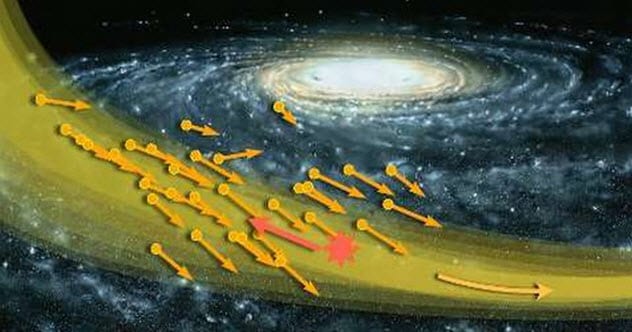
Is there something giant and mysterious lurking in space that rips apart nearby star clusters? Astronomers reckon there might be. In recent months, scientists have become aware that stars are disappearing from the Hyades cluster. Hyades is one of the closest star clusters to our own Sun, sitting just 153 light-years away.
Researchers at the European Space Agency (ESA) noticed the vanishing stars while looking at data from the Gaia satellite. One theory, published in Astronomy & Astrophysics in April 2021, is that a strange cosmic entity is tearing into the Hyades cluster. A thin strip of stars known as a tidal tail seems to have been yanked out of place, rendering the stars invisible from Earth.
The ESA team reckon that a wandering wedge of dark matter may be behind the disruption. Researchers reckon that Hyades may have encountered a small halo of matter ten million times the mass of the Sun. As the name suggests, dark matter does not emit any light. This means that, although it is highly abundant in the universe, scientists understand very little about it.[3]
7 Unicorn Black Hole Spotted 1,500 Light Years from Earth
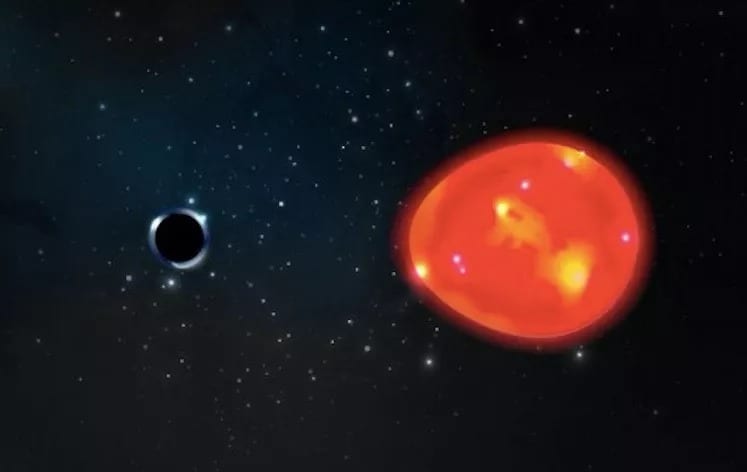
Astronomers have uncovered a black hole 1,500 light-years from Earth, making it the closest black hole known to science. Black holes are known as cosmic giants, but this is one of the smallest ever seen. The tiny stellar object weighs just three times the mass of the sun. Scientists have given it the nickname ‘The Unicorn’ because it is rare to find one with such low mass and because it was spotted in Monoceros, the unicorn constellation.
A team of researchers at Ohio State University came across the low-mass object while searching for bright stars with black holes nearby. Black holes absorb everything, including light, which makes them notoriously difficult to spot. But the scientists detected ‘The Unicorn’ because its gravitation field has a small tugging effect on a nearby red giant star. This mild gravitation pull causes the star to distort ever so slightly, which the Ohio group picked up using a range of telescopes and surveys.[4]
6 The Hellish New Planet that Turns Metal to Vapor
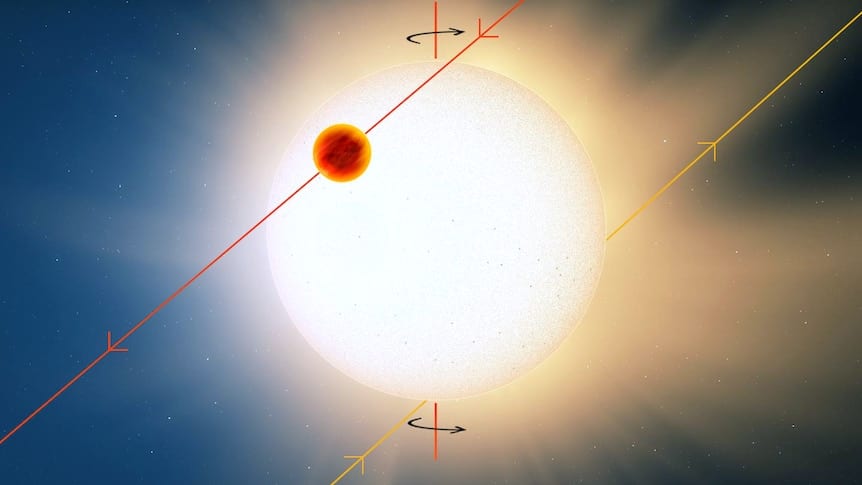
TOI-1431b: a planet hotter than lava that vaporizes metal. This “hellish” ball of flames was discovered by physicists at the University of Southern Queensland. Almost twice the size of Jupiter, scientists say it might be the hottest planet in the known universe.
The scorching planet is less than 500 light-years from Earth and reaches temperatures of 2,700 degrees Celsius. That blistering heat is well above the melting point of most metals. “This is a very hellish world,” Dr Brett Addison told the press. “No life could survive in its atmosphere. In fact, the planet’s nightside temperature [2,300 degrees Celsius] is the second hottest ever measured.”[5]
5 Giant Jellyfish Structure Discovered in Space
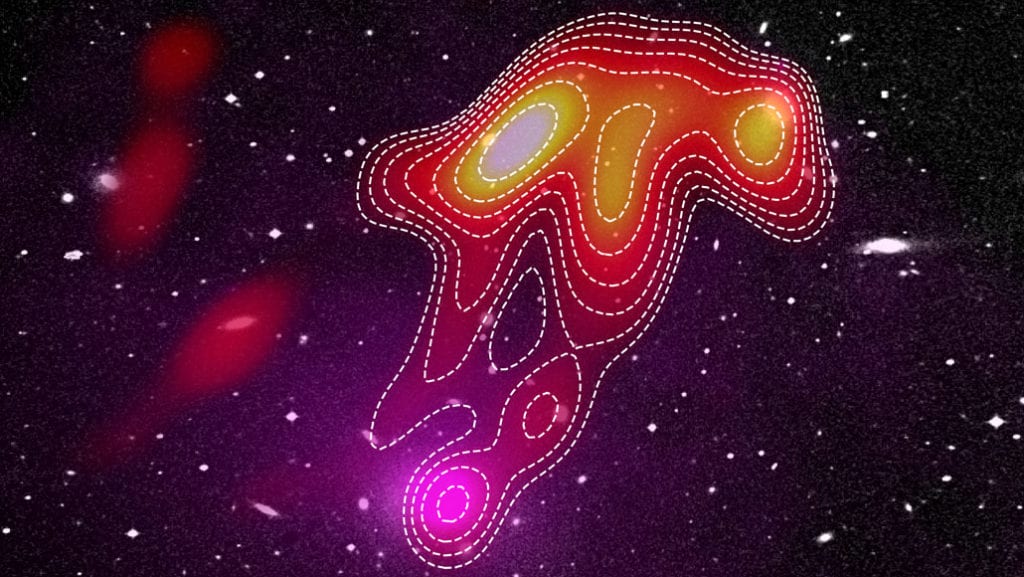
Extra-terrestrial jellyfish might sound like something out of a dodgy science fiction B movie. But scientists recently discovered a mammoth tentacled structure sprawling across the cosmos, and it has left them scratching their heads. The USS jellyfish is a mysterious mass of charged particles with a width of over a million light-years. The elusive giant has been described as the first known polyphoenix – a mysterious and intricate expanse of space that emits radio waves. Astronomers say they have never seen anything quite like it.
Australian student Torrance Hodgson first uncovered the USS jellyfish in 2017 as part of his graduate research project. At first, he assumed he had made a mistake. But, after much analysis, he and his advisor Melanie Johnston-Hollitt discovered the unique structure lurking in the Abell 2877 galaxy cluster. The acronym ‘USS’ bears no relation to the US navy. Instead, it stands for ultra-steep spectrum, a reference to the fact that the USS jellyfish only appears on a narrow band of low-frequency radio waves.
Scientists have speculated about the origins of the USS jellyfish. One theory is that the gargantuan structure is made of the remnants of matter spewed out by black holes around two billion years ago.[6]
4 Cosmic Pipelines Fuelled the Early Universe
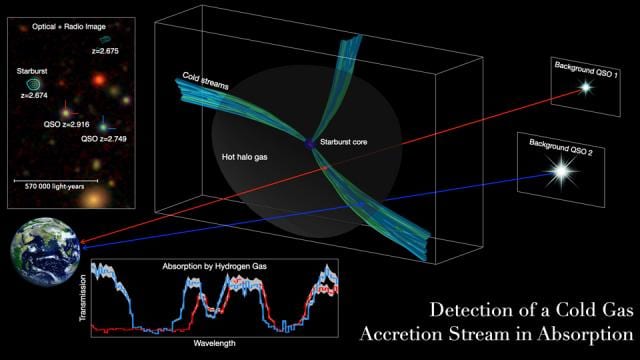
In the early days of the universe, only a few billion years after the Big Bang, outer space was a vast network of massive galaxies. Giant star systems filled the skies. These enormous galaxies needed cold gas for fuel, but they were almost always surrounded by hot atmospheric gas. From where did this cold gas come? How were these supersized galaxies able to survive?
Cosmologists have spent years searching for an answer to those questions. Now, thanks to a new study from the University of Iowa, they are one step closer to a definitive answer.
Scientists have long suspected that galaxies were fed cold gas by interconnecting structures made of dark matter. These structures are similar to filaments and pipelines. But this recent study marks the first time astronomers have detected one of the cosmic “pipelines.”
Using a state-of-the-art detector in the Atacama Desert, cosmologists looked into a galaxy formed when the universe was just 2.5 billion years old, a fifth of its current age. The research team found evidence in the form of “chemical fingerprints” on the outskirts of the galaxy that suggested there was a stream of cold gas. Further analysis confirmed the gas was being pumped in from the outside, supporting the theory of galactic filaments.[7]
3 Dark Sirens Could Solve One of the Major Puzzles of the Universe
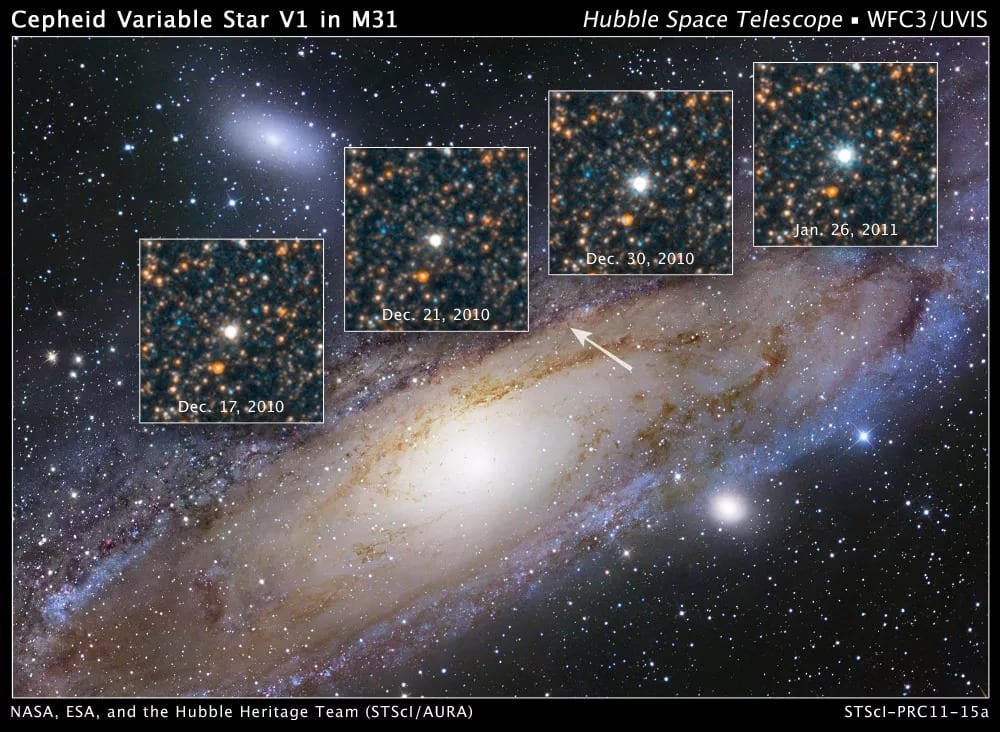
The universe is a mysterious thing. It is constantly expanding, we know that for sure, and all the galaxies inside it are drifting further apart. But measuring the speed of its growth is a difficult task. The expansion of the universe is described by the Hubble constant, named after US astronomer Edwin Hubble. But there are two different ways of calculating the Hubble constant and they both produce significantly different results.
But now there is a new theory that could help solve this issue: dark sirens. Dark sirens occur when enormous stellar objects like black holes or neutron stars come smashing into each other with such force that it warps the fabric of time and space. These astronomical distortions are known as gravitational waves and were first picked up by the LIGO detector in 2015.
Dark sirens are known to produce flashes of light that show up on traditional telescopes. When this happens, scientists can use the gravitational wave signal to calculate the distance then work out how quickly it is moving away by measuring the light. But researchers hope that, as technology improves, they should soon be able to pinpoint dark sirens with extreme precision. In the ever-evolving field of gravitational wave astronomy, scientists will be able to calculate the Hubble constant without the need for the burst of light.[8]
2 Radio Signal Detected From Deep Inside the Cosmos
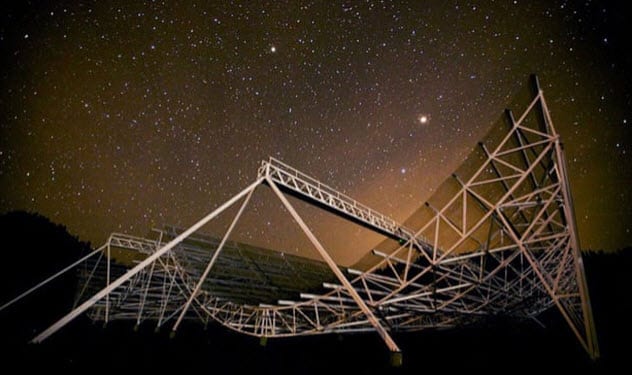
In March 2021, scientists announced that they had picked up a signal from the most distant region of space ever recorded. The celestial emissions traveled 13 billion light-years before they were discovered by stargazers on Earth.
It is highly unusual for astronomers to find radio signals from so deep in space. The waves are said to come from a far-flung quasar, an enormous galactic object that lets off a colossal amount of energy. Scientists believe that the signal they received was emitted when the universe was 780 million years old, still in its infancy.[9]
1 The Milky Way’s Glowing Core Could Shed Light on Dark Matter
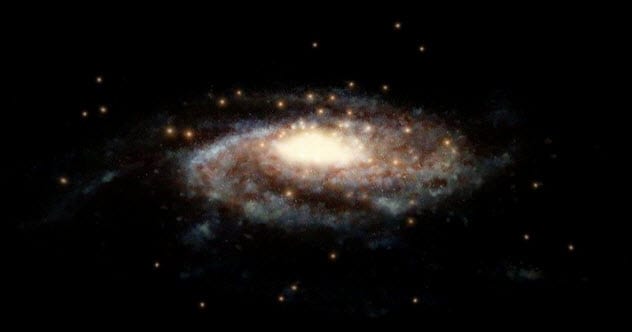
There is a strange glow coming from the center of our galaxy, and no one is quite sure what causes it. Scientists were baffled to find gamma rays from the heart of the Milky Way back in 2009 using NASA’s Fermi telescope. Now, a new study, published in March 2021, suggests that the elusive source of the celestial gleam could be dark matter.
The trailblazing paper was written by Mattia di Mauro, a nuclear physicist based in Turin. He studied ten years of measurements from the Fermi telescope, as well as data from the International Space Station, and studies of nearby dwarf galaxies. The evidence suggests that dark matter particles are crashing together and destroying each other in a blaze of gamma rays and subatomic particles.
If Mauro’s theory is correct, it could pave the way for a new understanding of dark matter. From the wealth of evidence he collected, the Italian physicist has estimated the mass, behavior, and decay of the mysterious particles.
But many other scientists are wary of Mauro’s findings. Some believe that the galactic glow has nothing to do with dark matter. Instead, they argue that it comes from a bulge of stars in the core of the Milky Way.[10]
10 Amazing Things You Probably Don’t Know About The Space Race








